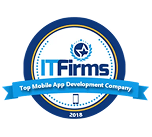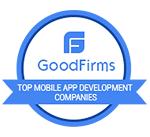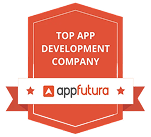Top 7 Use Cases of RAG in Mobile & Web Applications for 2025
Introduction: Why RAG Technology Matters in 2025
Imagine asking your mobile banking app a complex question about investment strategies and receiving an answer that’s not just accurate but also tailored to your financial history and current market conditions. This isn’t a distant fantasy—it’s the power of Retrieval-Augmented Generation (RAG) technology that’s transforming how we interact with web and mobile applications in 2025. As artificial intelligence continues to evolve at a breathtaking pace, RAG has emerged as a critical architecture that bridges the gap between static AI knowledge and dynamic, real-world information needs.
In today’s digital landscape, users demand more than just pre-programmed responses from their applications. They want intelligent, context-aware interactions that understand their unique needs and provide accurate, up-to-date information. Traditional AI models face significant limitations here—they’re constrained by their training data, which quickly becomes outdated, and they often struggle with domain-specific knowledge. This is where RAG shines brightly, combining the best of information retrieval systems with the generative capabilities of large language models (LLMs) to create experiences that feel genuinely intelligent and responsive .
The market impact of RAG technology is already substantial and growing rapidly. According to Grand View Research, the RAG market size is expected to increase from USD 1.96 billion in 2025 to USD 40.34 billion by 2035 . This explosive growth isn’t just hype—it’s driven by tangible benefits that businesses are experiencing across industries. From healthcare to e-commerce, organizations are discovering that RAG-powered applications can deliver unprecedented levels of personalization, accuracy, and efficiency in customer interactions.
As we explore the top use cases of RAG in mobile and web applications for 2025, you’ll discover how this technology is reshaping digital experiences across industries. Whether you’re a developer looking to implement RAG in your next project or a business leader seeking competitive advantages, understanding these applications will help you harness the full potential of this transformative technology.
What Exactly is Retrieval-Augmented Generation (RAG)?
At its core, Retrieval-Augmented Generation is an AI framework that elegantly combines two powerful components: a retrieval system that fetches relevant information from knowledge sources, and a generative model that produces natural language responses based on this retrieved content. Think of it as giving AI models a supercharged research assistant that can quickly look up relevant information before answering your questions, much like how a knowledgeable expert might consult reference materials before providing advice.
The traditional approach to AI-powered applications relied solely on what the model had learned during its training phase. This meant that if you asked about events that occurred after the model’s training cut-off date, or sought information about specialized domains not well-covered in the training data, you’d often receive incomplete, outdated, or sometimes completely fabricated responses (a phenomenon known as “hallucination”). RAG revolutionizes this dynamic by allowing applications to access current, verified information from designated knowledge sources at the moment of query processing.
Here’s how the RAG process works in practice: When a user submits a query, the system first converts this question into a numerical representation (embedding) and searches through a knowledge base—often a vector database—to find the most relevant information. This retrieved content is then combined with the original query and fed to the generative model, which synthesizes both elements to produce a coherent, accurate response. This entire process happens in near-real time, creating the seamless experience users expect from modern applications.
What makes RAG particularly exciting for mobile and web applications is its flexibility. The knowledge base can be updated independently of the AI model, meaning applications can stay current without expensive retraining processes. This is especially valuable in fast-moving industries where information changes frequently, such as healthcare, finance, and technology.
Also Read – AI App Development Cost in 2025: From MVPs to Full-Scale Solutions
How Does RAG Work? The Technology Behind the Magic
Understanding the technical underpinnings of RAG helps appreciate why it’s becoming indispensable for sophisticated web and mobile applications. The RAG architecture operates through a sophisticated yet elegant pipeline that combines several AI technologies to deliver its impressive capabilities.
The first critical component is the retriever system. When a user submits a query through a mobile app or web interface, this query is converted into a vector embedding—a numerical representation that captures its semantic meaning. This embedding is then compared against a database of document embeddings using similarity search algorithms. The system identifies and retrieves the most relevant text chunks from knowledge sources, which could include product databases, internal documentation, or current web content .
Next comes the augmentation phase, where the retrieved information is combined with the original query to form an enriched prompt. This step is crucial because it provides the generative model with the specific context needed to produce an accurate response. Advanced RAG systems often employ techniques like reranking and query expansion to ensure the most relevant information is prioritized.
The final stage is generation, where a large language model processes the augmented prompt to produce a coherent, natural language response. What makes this different from standard LLM usage is that the model is working with freshly retrieved, relevant information rather than relying solely on its internal knowledge. This approach significantly reduces hallucinations and improves factual accuracy.
For mobile applications, RAG implementations often include additional optimizations to account for variable network conditions and device capabilities. Some sophisticated apps use on-device processing for certain retrieval tasks, while others leverage cloud resources for more computationally intensive operations. The best implementations maintain a seamless user experience regardless of connectivity challenges.
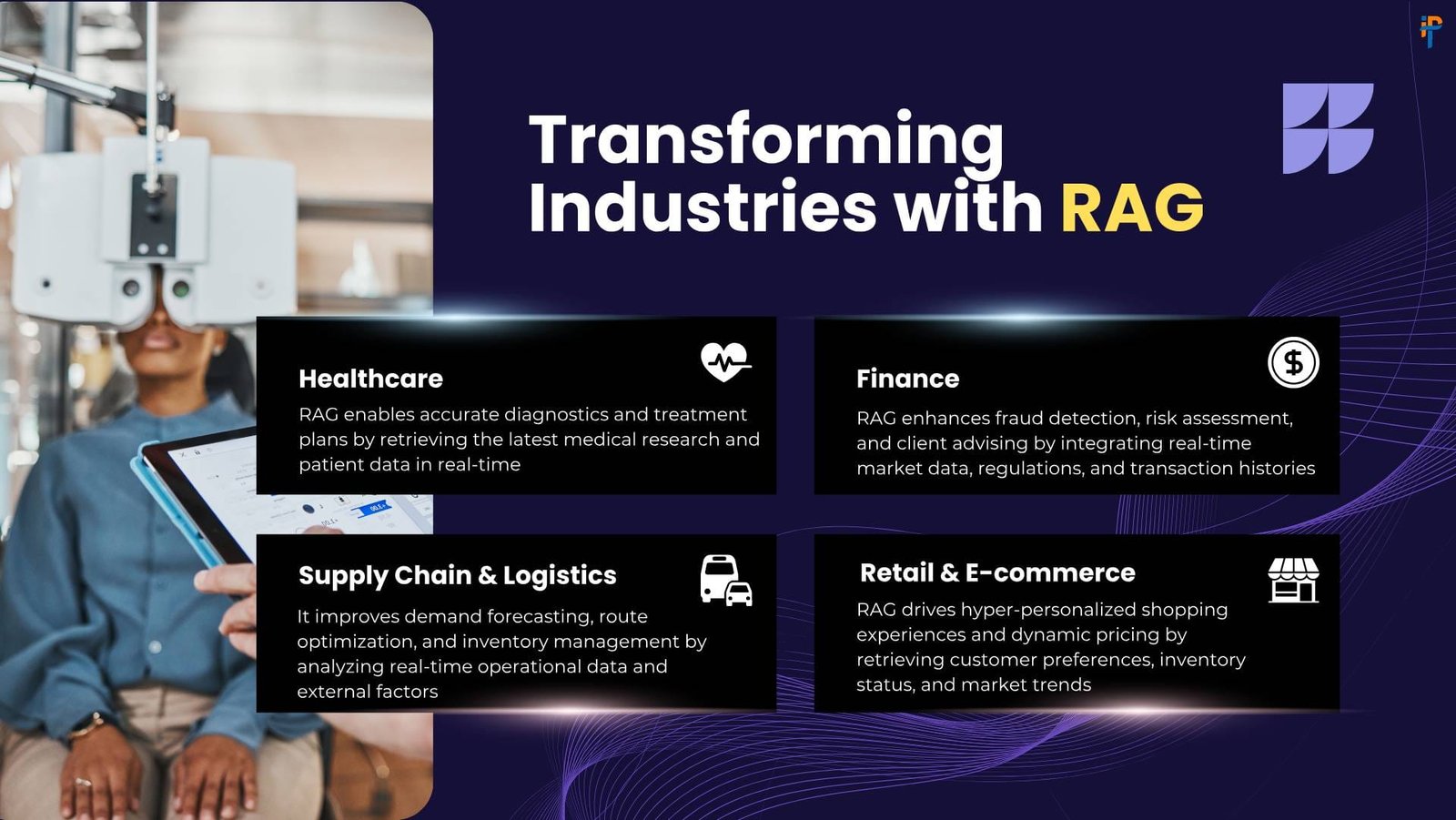
RAG vs Traditional Generative AI
Most people are familiar with traditional generative AI — large language models (LLMs) like GPT that produce text based on patterns they learned during training. While powerful, these models have some clear weaknesses when used in mobile and web apps.
Where Traditional Generative AI Falls Short
- Stale knowledge: A model is only as current as the data it was last trained on. If your app needs today’s pricing, updated policies, or breaking news, a static model won’t cut it.
- Hallucinations: LLMs sometimes generate “plausible but wrong” answers, which can harm user trust.
- Limited transparency: Users and regulators increasingly want to know why an AI gave a particular answer. Traditional LLMs can’t easily show their sources.
How RAG Changes the Game
Retrieval-Augmented Generation solves these issues by adding a retrieval step before generation. That means the model doesn’t rely only on its frozen training but can pull fresh, domain-specific knowledge into every response.
With RAG, apps:
- Stay up-to-date by connecting to live knowledge sources (databases, knowledge bases, APIs).
- Produce fact-grounded answers with citations, reducing hallucinations.
- Offer auditability and compliance because retrieved passages can be stored and shown to end users.
Quick Comparison Table
| Feature | Traditional Generative AI | RAG (Retrieval-Augmented Generation) |
|---|---|---|
| Knowledge freshness | Limited to the training cutoff | Always current with retrievable data |
| Risk of hallucinations | High | Lower (grounded in sources) |
| Transparency | Opaque | Source citations & provenance |
| Cost of updating knowledge | High (retrain or fine-tune) | Low (re-embed and re-index) |
| Best for | Creative text, brainstorming | Enterprise apps, support, compliance, search |
In short, think of traditional generative AI as a talented storyteller with a great memory — but it can’t look up new facts. RAG is like giving that storyteller a library card and internet access.
First and foremost, RAG delivers dramatically improved accuracy and relevance in application responses. By grounding generated content in specific retrieved documents, RAG systems produce responses that are more factually correct and contextually appropriate. This is particularly valuable in domains where precision matters, such as healthcare information, financial advice, or technical support. For instance, IBM Watson Health uses RAG to provide medical insights by retrieving accurate information from patient records and medical literature .
Cost efficiency represents another significant advantage. Traditional approaches to keeping AI applications current required periodic retraining of models—an expensive and computationally intensive process. With RAG, organizations can maintain accuracy simply by updating their knowledge bases, which is far more cost-effective. This makes sophisticated AI capabilities accessible to smaller organizations and enables more sustainable implementation patterns.
Real-time knowledge integration is perhaps one of the most compelling benefits for contemporary applications. In our fast-moving world, information can become outdated rapidly—whether we’re talking about product inventories, news developments, or medical research. RAG-powered applications can incorporate the latest information simply by updating their knowledge sources, ensuring users always receive current and relevant responses.
Enhanced user trust naturally follows from these improvements. When applications provide accurate, verifiable information with source attribution (a capability many RAG systems include), users develop greater confidence in the system. This is particularly important in domains where AI advice influences significant decisions, such as healthcare, finance, or legal matters.
Finally, RAG systems offer greater developer control and flexibility. Developers can curate and manage knowledge sources, implement permission systems for sensitive information, and troubleshoot inaccuracies by modifying specific documents rather than retraining entire models. This level of control is essential for enterprise applications where accuracy, security, and compliance matter.
Also Read – AI Agents Explained: Why They Matter and Real-World Use Cases
Top 7 Use Cases of RAG in Mobile & Web Applications for 2025
1. Intelligent Customer Support Chatbots
Customer support has been transformed by RAG technology, moving far beyond the limited scripted responses of earlier chatbot generations. Modern RAG-powered support assistants can retrieve information from vast knowledge bases, including product manuals, FAQ documents, internal guidelines, and even specific customer interaction histories to provide personalized, accurate responses to complex queries.
Consider how Shopify’s Sidekick chatbot implements RAG technology to deliver superior customer service. When a merchant asks a question about their store, Sidekick automatically retrieves relevant information from that specific store’s data—including inventory levels, order histories, and policy documents—to provide tailored responses that address both the general question and the specific context of that business.
The implementation advantages for mobile applications are particularly noteworthy. Support chatbots powered by RAG can deliver consistent, high-quality assistance across web and mobile platforms, with the added benefit of being able to push relevant documentation and follow-up information through mobile notifications. This creates a seamless omnichannel support experience that today’s consumers expect .
Beyond basic query response, advanced RAG systems in customer support can perform multi-step troubleshooting guides, proactively suggest solutions based on similar resolved cases, and even escalate to human agents when necessary—with full context preservation to minimize customer repetition. The results are tangible: companies implementing RAG-powered support systems report significant reductions in resolution times and increases in customer satisfaction metrics.
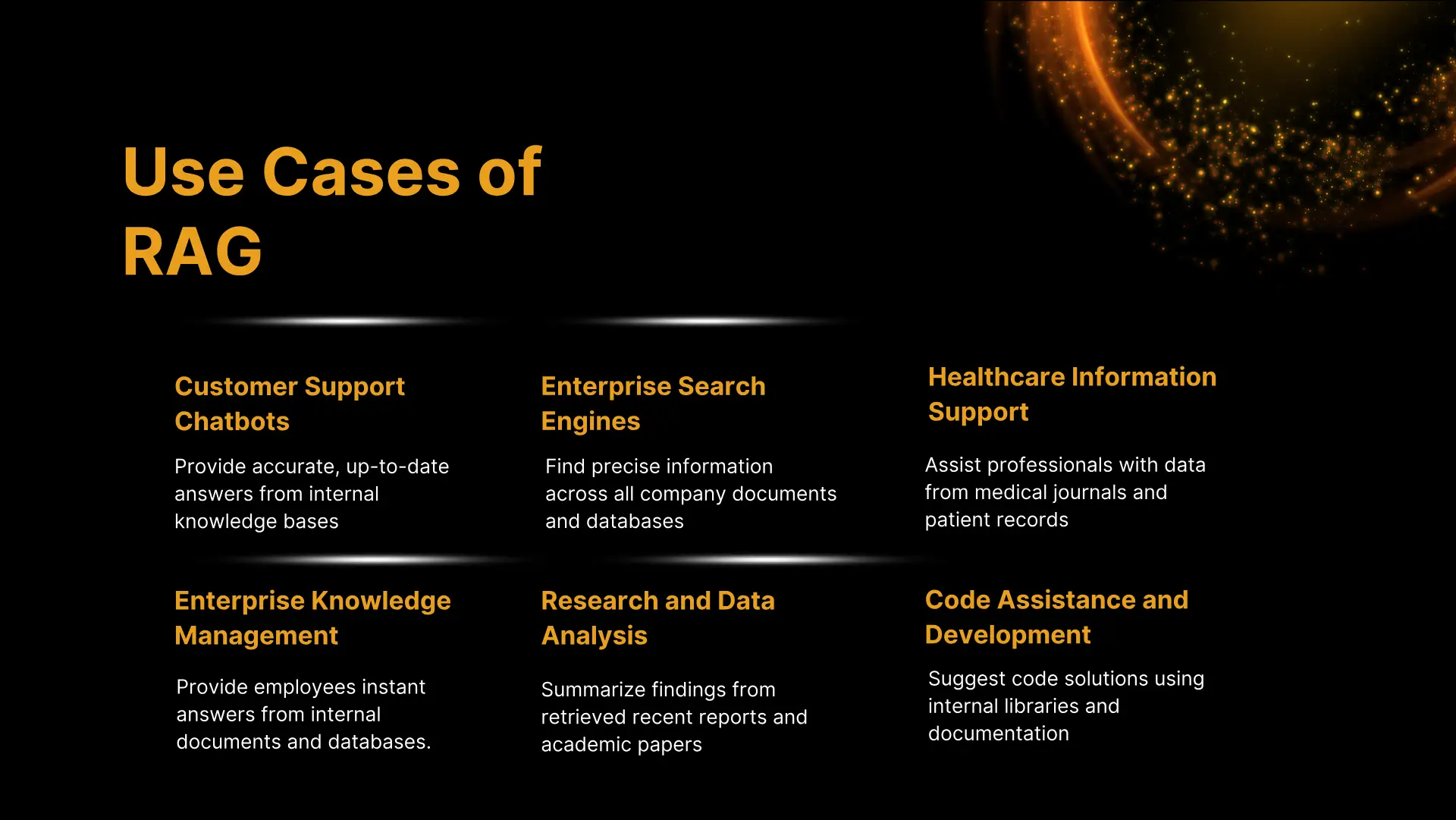
2. Enhanced E-Commerce Product Recommendations
E-commerce has entered a new era of personalization with RAG technology. Rather than relying solely on collaborative filtering or generic recommendation algorithms, RAG-powered systems can retrieve information from detailed product catalogs, current inventory data, real-time trend information, and individual customer preferences to create highly tailored shopping suggestions that feel genuinely personalized.
Amazon’s implementation of RAG techniques exemplifies this approach. Their systems combine customer behavior data with comprehensive product information retrieved from knowledge graphs to generate contextually relevant suggestions that go beyond “customers who bought this also bought…” to something more like “based on your recent search for outdoor gardening solutions and your climate zone, you might find these drought-resistant plants interesting” .
For mobile shopping applications, RAG enables particularly innovative experiences. Imagine pointing your phone’s camera at a product in the physical world and immediately receiving detailed information, availability data, and complementary product suggestions—all generated in real-time by retrieving relevant information from multiple knowledge sources. This blending of physical and digital retail experiences represents the future of commerce.
The business impact of these advanced recommendation systems is substantial. Retailers implementing RAG-powered recommendations report higher conversion rates, increased average order values, and improved customer loyalty. By delivering genuinely helpful and relevant suggestions rather than generic promotions, these systems create shopping experiences that feel less like transactions and more like personalized service.
3. Healthcare Diagnosis and Medical Research Assistance
In healthcare applications, where accuracy can literally be a matter of life and death, RAG technology is proving invaluable. Medical professionals using RAG-powered applications can access synthesized information from vast knowledge bases, including medical journals, drug databases, clinical guidelines, and patient records to support diagnostic accuracy and treatment decisions.
IBM Watson Health demonstrates RAG’s potential in medical settings. Their system analyzes patient data against extensive medical literature, retrieving relevant studies and clinical guidelines to assist doctors in diagnosing complex cases and determining personalized treatment options. In oncology, this approach has shown remarkable results—matching treatment recommendations with expert oncologists 96% of the time, according to a study in the Journal of Clinical Oncology.
For mobile health applications, RAG enables powerful new capabilities. Doctors can use tablet-based applications during patient consultations to quickly retrieve information about drug interactions, recent research on specific conditions, or treatment protocols. Patients themselves can benefit from medically accurate information retrieval systems that provide reliable health information rather than the questionable content often found through general web searches.
The research acceleration aspects shouldn’t be overlooked either. Medical researchers using RAG-powered applications can quickly synthesize information across vast corpora of scientific literature, identifying connections and insights that might otherwise remain hidden in specialized publications. This knowledge retrieval capability is accelerating medical advances and helping healthcare professionals stay current with the rapidly expanding body of medical knowledge.
4. Personalized Learning and Educational Support
Educational technology has embraced RAG to create truly adaptive learning experiences that respond to individual student needs. Rather than offering one-size-fits-all content, RAG-powered educational applications can retrieve information from diverse learning materials—textbooks, research papers, multimedia content, and previous interaction data—to provide personalized learning pathways and explanations.
RAMO (Retrieval-Augmented Generation for MOOCs) represents an innovative implementation in this space. It addresses the “cold start” problem in course recommendations by utilizing LLMs to generate personalized course suggestions through conversational interfaces. The system understands learner preferences and career goals to offer relevant course options, dramatically enhancing the online learning experience.
For mobile learning applications, RAG enables particularly powerful capabilities. Students can ask questions in natural language and receive explanations drawn from multiple educational sources, formatted appropriately for their learning level and style. The applications can adapt in real-time based on student comprehension, retrieving additional examples when needed or advancing more quickly when concepts are mastered.
Corporate training applications similarly benefit from RAG implementations. New employees can interact with intelligent tutoring systems that retrieve information from company manuals, process documentation, and best practices guides to provide consistent, accurate training experiences. This approach significantly reduces onboarding time while ensuring all employees receive the same high-quality information.
5. Enterprise Knowledge Management Systems
Large organizations often struggle with knowledge management—critical information becomes siloed in different departments, stored in various formats, and is difficult to find when needed. RAG-powered knowledge management systems transform this dynamic by creating intelligent interfaces that allow employees to retrieve information from disparate internal systems through natural language queries.
Siemens provides an excellent example of RAG implementation for enterprise knowledge. They’ve integrated RAG technology into their digital assistance platform, allowing employees to retrieve information from various internal documents and databases quickly. When faced with technical questions, users can input queries and receive relevant documents alongside contextual summaries, dramatically improving information discovery and collaboration.
Mobile implementations of these systems are particularly valuable for organizations with field staff or distributed workforces. Field technicians can use mobile applications to access repair manuals, safety procedures, and technical specifications without needing to carry physical documents or return to office locations. The RAG system can even retrieve information based on images or sensor data captured through mobile devices.
The compliance and auditing benefits shouldn’t be overlooked either. RAG systems can be configured to retrieve information from approved sources only, ensuring that responses align with organizational policies and regulatory requirements. This controlled access to knowledge is particularly valuable in highly regulated industries like finance and healthcare, where inaccurate information can have serious consequences.
6. Financial Services and Fraud Detection
Financial institutions handle enormous volumes of complex, rapidly changing information—from market data to regulatory requirements to transaction records. RAG-powered applications in this sector can retrieve and synthesize information from diverse sources to support everything from investment decisions to fraud detection to compliance reporting.
JPMorgan Chase’s implementation of AI-driven fraud detection showcases RAG’s potential in financial services. Their systems continuously retrieve and analyze real-time data from various sources to monitor transactions and detect potential fraud. By combining transaction data with external fraud reports and blocklists, these systems can flag suspicious activities with greater precision while reducing false positives that traditionally overwhelmed rule-based approaches.
For mobile banking applications, RAG enables sophisticated financial advice capabilities. Users can ask complex questions about investment strategies, retirement planning, or loan options and receive responses grounded in current market data, regulatory information, and their personal financial history. This creates a personalized banking experience that was previously only available to high-net-worth individuals with dedicated financial advisors.
Wealth management firms like Morgan Stanley have implemented RAG technology to enhance their services. They’ve partnered with OpenAI to create a solution that enables financial advisors to quickly access and synthesize vast ranges of internal insights related to companies, sectors, and market trends. This system not only retrieves data but also generates explanatory text, ensuring advisors receive precise answers to complex client questions.
7. Intelligent Content Creation and Optimization
Content creation represents another domain where RAG technology is proving transformative. Rather than starting from blank pages, content creators using RAG-powered applications can retrieve relevant information, statistics, and examples from vast knowledge bases to enhance their writing with accurate, up-to-date information.
Journalists and writers benefit from systems that can retrieve background information, factual data, and related content to support their storytelling. For instance, a writer covering climate change can use a RAG-powered tool to retrieve the latest research statistics, policy developments, and historical context to create more comprehensive and accurate articles.
Marketing content creation is particularly enhanced by RAG technology. Marketing professionals can use these systems to generate campaign ideas, slogans, and content outlines informed by current market trends, consumer sentiment analysis, and successful campaign archives. The resulting content is both creative and data-informed, likely to resonate more effectively with target audiences.
Search engine optimization represents another valuable application area. RAG-powered tools can analyze top-performing content for specific queries, retrieve information about current search trends, and generate optimization suggestions that help content rank better while maintaining quality and relevance. This combination of creative generation and information retrieval is proving far more effective than earlier-generation SEO tools.
Implementing RAG in Your Applications: Key Considerations
Successfully implementing RAG technology in web and mobile applications requires careful planning across several dimensions. While the benefits are substantial, realizing them depends on thoughtful execution that considers everything from knowledge base design to user experience optimization.
First and foremost, knowledge base quality determines RAG system performance. Your applications will only be as good as the information they can retrieve, so investing in comprehensive, well-structured knowledge sources is essential. This involves not just gathering relevant documents but also implementing effective chunking strategies (breaking documents into semantically meaningful segments), adding appropriate metadata, and establishing processes for regular updates.
Retrieval optimization represents another critical consideration. Basic vector similarity search sometimes returns irrelevant results, so sophisticated implementations often employ techniques like hybrid search (combining semantic and keyword-based approaches), reranking (using a secondary model to reorder results by relevance), and query expansion (adding synonyms or related terms to the original query).
User experience design for RAG-powered applications requires particular attention. Unlike traditional search interfaces that return lists of results, RAG applications typically provide synthesized answers, which means users can’t easily scan multiple sources to verify information. This makes features like source attribution and confidence indicators particularly important for building user trust.
Mobile-specific implementations present additional considerations. Network variability, screen size constraints, and processing limitations mean mobile applications often benefit from optimized RAG approaches—sometimes performing initial retrieval on device for speed and privacy, while leveraging cloud resources for more complex operations. The best implementations maintain responsive experiences regardless of connectivity challenges.
Finally, evaluation frameworks are essential for measuring and improving RAG system performance. Traditional metrics like latency and uptime remain important, but RAG systems also require evaluation on dimensions like groundedness (how well responses align with retrieved facts), relevance, and usefulness. Establishing these measurements early ensures continuous improvement.
The Future of RAG in Application Development
As we look beyond 2025, RAG technology continues to evolve in exciting directions that will further expand its capabilities and applications. Understanding these emerging trends helps developers and businesses prepare for the next wave of innovation in AI-powered applications.
Agentic systems represent one of the most significant evolutionary directions for RAG technology. Rather than simply responding to individual queries, RAG is increasingly being integrated into AI agents that can perform multi-step processes, make decisions, and take actions based on retrieved information. These systems use RAG to ground their decisions in accurate, current knowledge, dramatically expanding their capabilities.
Multimodal retrieval is another important frontier. While current RAG systems primarily work with text, next-generation implementations can retrieve and reason across multiple modalities—images, audio, video, and structured data. This enables applications that can, for example, retrieve product information based on images captured through mobile cameras or find relevant research papers based on charts and diagrams.
Efficiency improvements will make RAG technology accessible to a broader range of applications and organizations. Techniques like contextual prompt compression, better caching strategies, and optimized embedding models are reducing the computational costs of RAG systems, making them viable for applications with stricter latency or budget constraints.
Personalization capabilities are also advancing rapidly. Future RAG systems will better understand individual user contexts, preferences, and histories to retrieve and generate increasingly tailored responses. This hyper-personalization will make applications feel more intuitive and helpful, anticipating user needs rather than simply responding to explicit queries.
As these advancements mature, RAG technology will become increasingly invisible to users—not because it’s disappearing, but because it’s becoming so seamlessly integrated into our digital experiences that we take its capabilities for granted, much like we now take internet search for granted. The applications that leverage these capabilities most effectively will define the next generation of digital experiences.
Conclusion: Embracing RAG for Transformative Applications
Retrieval-Augmented Generation has fundamentally changed what’s possible in web and mobile applications, bridging the gap between generative AI’s creative capabilities and the precise, current information users demand. As we’ve explored through these seven use cases, this technology is already delivering tangible value across industries—from healthcare to e-commerce, education to finance.
What makes RAG particularly exciting is its democratizing potential. While developing custom AI models remains complex and expensive for most organizations, RAG provides an accessible path to sophisticated AI capabilities by leveraging existing knowledge resources. This accessibility means organizations of all sizes can harness cutting-edge AI to create more intelligent, responsive applications.
As we move forward through 2025 and beyond, the distinction between “traditional” applications and AI-powered experiences will continue to blur. Users will increasingly expect applications that understand their needs, provide accurate information, and adapt to their contexts—expectations that RAG technology is uniquely positioned to address.
The organizations that thrive in this evolving landscape will be those that strategically integrate technologies like RAG into their application development roadmaps. By starting with specific use cases where accurate, current information delivers significant value, then expanding these capabilities over time, businesses can create digital experiences that genuinely stand out in increasingly competitive markets.
IPH Technologies harnesses the power of Retrieval-Augmented Generation (RAG) to build the next generation of intelligent applications and AI-powered solutions. We transform businesses by embedding hyper-personalized, accurate, and data-driven AI directly into your mobile and web platforms. Our bespoke software development and seamless integration of RAG systems help you move beyond generic chatbots and unlock true innovation, scalable growth, and a competitive edge with IPH—where cutting-edge technology meets tangible business results.
Ultimately, RAG represents more than just a technical approach—it embodies a shift toward applications that work with humans rather than simply for them, augmenting our capabilities with vast knowledge retrieval and synthesis abilities. As this technology continues to evolve and mature, its potential to transform how we interact with digital information remains limited only by our imagination in applying it to real-world challenges.












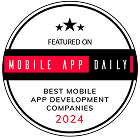
.png)
